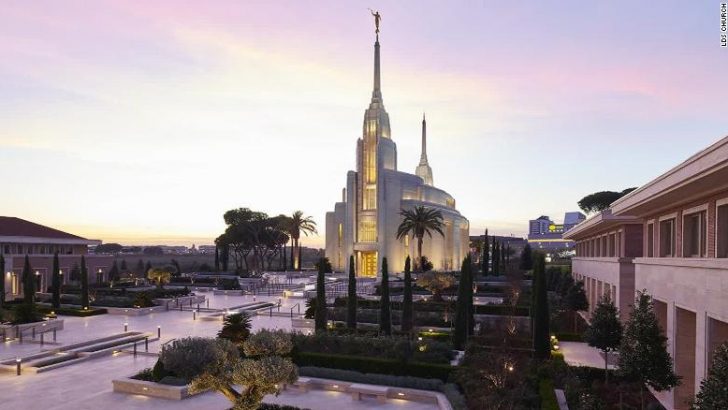The Notebook
Fr Bernard Healy
“There are hundreds of churches in Rome, why on earth would you want to visit a Mormon temple?” A fair question from a fellow-priest, but the consecration of a Mormon temple on the outskirts of Rome offered a rare opportunity, because once a temple is consecrated, only Mormons in good standing may enter. Only in the weeks beforehand can outsiders like myself see what’s inside.
A temple isn’t exactly like a church. Mormons meet for their weekly Sunday worship and perform their regular liturgies in their local meeting-houses. They have about 30,000 local congregations worldwide, whereas there are only about 150 temples.
The temple is only for the most sacred of rites – for marriages (sealings), for a form of baptism intended to benefit ancestors and when Mormons wish to draw closer to God by entering into a particular covenant with him.
Mormonism began with the teachings of one Joseph Smith, who in a period of religious revival in 19th-Century America claimed to have received a revelation in order to correct traditional Christianity. He taught that after his Ascension, Our Lord brought the Gospel to the native Americans. From this grew a faith that diverged so much from orthodox Christian teaching that even the baptism administered by Mormons is not recognised by the Catholic Church. They hold that God the Father is, in some sense, material rather than purely spirit, and therefore part of this universe rather than above it as transcendent creator as we Catholics believe.
A consequence of this is that the Mormon afterlife – their idea of heaven – is understood as being a direct continuation of the family life lived here and now. This means a huge emphasis on marriage, not only as vocation, but as the literal beginning of a family relationship that lasts into eternity.
Trip
My trip to the temple strongly reinforced many of the impressions I previously had about the faith. There was a strong missionary dimension with volunteers from Italy and (especially) America present in force to help with the ‘open house’. Everyone there was imbued with the friendly courtesy which is almost a stereotype. My American Catholic friends have a strong respect for the kindness, integrity and upright behaviour of the Mormons they know.
It was striking how the Temple in its decoration was filled with reminders of Christ and His ministry. Whilst not a Christian faith as we understand it, Mormon piety and devotion is fascinated by the figure of Jesus Christ.
And yet, despite those positive impressions, something about the temple missed the mark for me. Despite its grandeur, the richness of its fittings, and the obvious devotion surrounding it, I was reminded more of a classy hotel than a place of worship. The richly appointed rooms for the temple ceremonies lacked that opening to the infinite that’s a feature of Christian sacred architecture.
It seemed too human in scale. Despite subtle nods to Italian design, I thought it was designed for American tastes and seemed like something lifted out of the States and transported to Rome.
One striking feature of the adjacent visitor centre is a massive series of statues of Christ and the Apostles. They are made of marble from the same quarry that Michelangelo used. However, they are reproductions of the famous Christus statue and apostles by the great Danish sculptor Thorwaldsen. The originals were digitally scanned and special machines carved the marble producing millimetre-perfect facsimiles.
Impressive as they are, I’m afraid they left me cold. I couldn’t help contrasting these computer-generated statues to the way Michelangelo described his artistic process: “Every block of stone has a statue inside it and it is the task of the sculptor to discover it.”
Whether we’re talking about art or life, the task is not to mechanically impose another’s design on what we have been given, but rather to approach what we have with understanding and respect; and with insight to bring out the unique beauty as willed and desired by God.
***
Pope Francis’ recent visit to the United Arab Emirates has brought renewed attention to the Church’s opportunities for respectful collaboration with non-Christian religions. As Fr Luis Ladaria (now Cardinal and Prefect of the CDF) wrote back in 2001: “Catholics and Mormons often find themselves working together on a range of problems regarding the common good of the entire human race. It can be hoped therefore that through further studies, dialogue and good will, there can be progress in reciprocal understanding and mutual respect.”


 The Mormon temple in
Rome. Despite its grandeur, it reminded
me more of a classy hotel
than a place of worship.
The Mormon temple in
Rome. Despite its grandeur, it reminded
me more of a classy hotel
than a place of worship. 